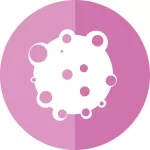
Bengaluru, January 17, 2024
Scientists at the Indian Institute of Science (IISc), Bengaluru, have made a groundbreaking discovery revealing that cancer cells exhibit a higher propensity to spread in senescent or aged tissues. This finding potentially provides insight into the often worse outcomes observed in elderly cancer patients compared to their younger counterparts.
Published in the journal Cellular and Molecular Life Sciences, the study conducted by the IISc team demonstrates that aged tissues release a unique protein known as extracellular matrix (ECM), which serves as the foundation for cell adhesion and growth. The cancer cells are drawn to this protein, offering a potential explanation for the accelerated spread observed in elderly patients.
In their experimental approach, the researchers utilized a chemotherapy-induced senescent model. Tissues from the lining of body cavities were extracted from mouse models, with half of these tissues exposed to cancer-treating chemotherapeutics, inducing a senescent state where cells cease replication but do not die.
Dr. Ramray Bhat, Associate Professor at the Department of Developmental Biology and Genetics (DBG) at IISc, explained, “What you might call in a body aging, in a cell or tissue you would call it senescence.”
Subsequently, both young and aged mouse tissues, as well as human tissue-like cell sheets, were exposed to ovarian cancer cells. Ovarian cancer, notorious for its late-stage detection, presented an ideal focus for the study.
The researchers observed that cancer cells exhibited a greater inclination to settle on aged tissues, particularly in proximity to aged normal cells in the cell sheets. Contrary to expectations, the attracting force was identified as the extracellular matrix rather than diffusing molecules.
“The extracellular matrix is what was bringing the cancer cells there and allowing them to better attach near the aged cells and spread faster,” Bhat explained.
Further experiments on human cell lines confirmed the strong adhesion of cancer cells to the ECM surrounding aged cells, eventually displacing the aged cells. The aged ECM exhibited elevated levels of proteins such as fibronectin, laminin, and hyaluronan compared to the ECM of young cells, enhancing the binding strength of cancer cells.
The researchers propose that this mechanism may contribute to the typically poorer outcomes in cancer seen in aged populations compared to younger ones. Dr. Bhat suggests that judicious use of chemotherapy becomes crucial in ensuring favorable outcomes, considering chemotherapy itself induces senescence, potentially exacerbating the situation.
Moving forward, the researchers envision the identification of probes that can predict cancer cell deposition based on matrix proteins. Additionally, they propose exploring senolytics—drugs targeting senescent cells—as a potential combination therapy with chemotherapeutics to mitigate cancer progression. This groundbreaking research opens avenues for a deeper understanding of cancer dynamics in aging populations, offering hope for more effective therapeutic interventions.












